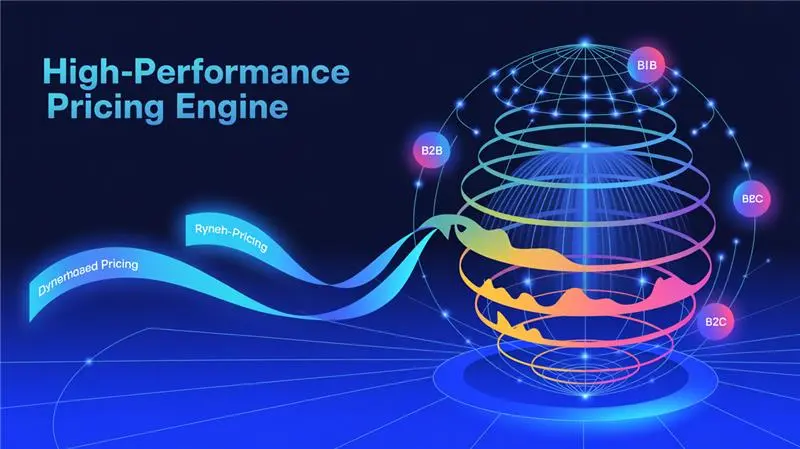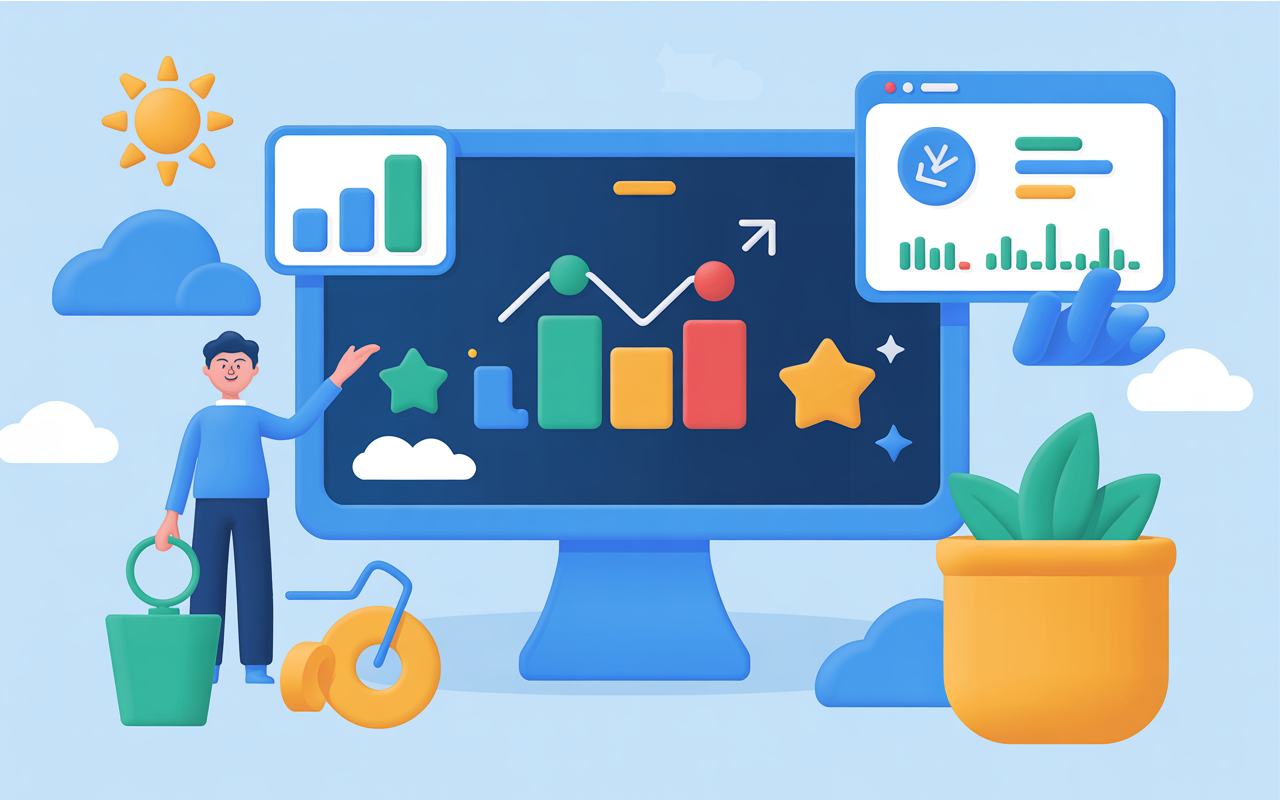
A good price engine does more than automate pricing; it helps businesses make smarter, faster, and more profitable decisions across complex markets. The true value lies in how it manages the growing number of price points caused by multiple products, channels, customer segments, and regions.
This blog explores what sets a high-performing price engine apart:
- It starts with rule-based pricing, ensuring your prices reflect internal costs and margin targets.
- Then it adapts through dynamic pricing rules, responding to changes in inventory, demand, or product types.
- It leverages external data sources like market trends, competitor activity, and economic shifts to keep pricing aligned with real-world conditions.
- It handles scale and frequency, managing thousands of price combinations and changes without slowing down.
- Finally, it integrates machine learning and AI, finding optimal prices within your business boundaries and strategies.
If your pricing needs are growing in complexity or speed, this guide will help you identify the essential capabilities a pricing engine should have and why they matter.
Also Read: How to Improve Data Quality for Accurate Price Optimisation
How Does a Price Engine Provide True Profitable Value?
The more products you sell, the more markets you operate in, and the more often prices need to be adjusted, the harder it is to stay accurate, competitive, and profitable without automation. This is where a pricing engine becomes more than just a convenience; it becomes a necessity.
To understand the value it brings, it's useful to take a step back and look at what your pricing landscape involves.
- Pricing complexity adds up quickly: Multiply the number of products you sell by the number of pricing dimensions, such as countries, sales channels, customer segments, or key accounts, and you may already be managing thousands (or even tens of thousands) of price points.
- Manual pricing can't scale: Managing them manually becomes time-consuming and error-prone as price combinations increase. This slows decision-making and exposes your business to lost revenue or reduced margins.
- Frequent price changes increase pressure: The more often your prices need to respond to market conditions like supply issues, competitor moves, or economic shifts, the harder it is to keep up without a system in place.
- A price engine handles the volume and speed: It automates complex decisions, keeps pricing consistent across regions and channels, and allows teams to react faster with data-driven updates.
- It protects profit and performance: By managing rules, logic, and thresholds at scale, a pricing engine helps maintain margins, meet revenue goals, and align pricing with your broader business strategy.
For many companies, a pricing engine quickly moves from being a nice-to-have to a critical tool that enables growth, agility, and sustained profitability.
What are the Extra capabilities of a Price Engine?
A modern pricing engine is no longer just a tool for setting static prices, it’s a strategic asset that evolves in complexity and intelligence. Think of it like peeling back layers of an onion: each layer adds new capabilities, moving from basic rule-based pricing to dynamic, market-responsive strategies powered by data and AI.
Here’s a breakdown of the extra capabilities that take a pricing engine from functional to transformational:
1. Basic Rule-Based Pricing (The Core Layer)
At its foundation, a pricing engine applies predefined rules to ensure pricing consistency and compliance.
These rules typically include:
- Internal cost structures.
- Minimum margin requirements to preserve profitability.
- Fixed markup strategies or pricing formulas.
This basic automation ensures that:
- You’re working with accurate, clean data.
- Pricing decisions remain consistent and repeatable across the organisation.
2. Dynamic Rules (More Advanced Layer)
Once the fundamentals are in place, the pricing engine can become more responsive through dynamic rules.
Dynamic pricing considers:
- Inventory levels: adjusting prices when stock is high or low.
- Market demand: increasing or decreasing prices based on buyer behaviour.
- Product types:
- Commodities (e.g., raw materials) may have tighter margins.
- Non-commodities (e.g., premium products) allow for more flexible pricing.
This layer enables agility, helping businesses stay competitive in changing conditions.
3. Use of External Data
The next step is to bring in real-world data to refine pricing further.
External data inputs can include:
- Competitor pricing in transparent markets (particularly in B2C).
- Market trends in B2B environments, even if exact competitor prices aren’t visible.
- Example: Tracking whether raw materials like lumber are trending up or down.
By analysing these external signals, businesses can proactively adapt prices to align with market realities.
4. Market Events & Economic Cycles
A robust pricing engine should also account for broader market forces and economic shifts.
This includes:
- Event-based pricing: reacting to things like supply chain disruptions, global events, or regulatory changes.
- Economic cycles: adjusting pricing strategy during inflation, recessions, or booms.
By aligning pricing models with the current economic environment, businesses remain relevant and resilient.
5. Machine Learning & AI (The Outer Layer)
At its most advanced, a pricing engine leverages machine learning (ML) and AI to make predictive, data-driven decisions.
These models:
- Analyse both internal and external price drivers.
- Compute optimal prices dynamically, based on patterns and probabilities.
However, they still operate within guardrails:
- Respecting business rules, margin thresholds, and strategic goals.
- Ensuring the pricing remains governed, compliant, and aligned with the company’s objectives.
The evolution of a pricing engine follows a clear path:
- Start with static rules for control and consistency.
- Add dynamic pricing for agility.
- Integrate external data to stay market-aligned.
- Incorporate economic awareness for strategic relevance.
- Layer in AI and machine learning for intelligent optimisation.
Each layer builds on the last, enabling organisations to move from pricing reactively to pricing strategically with precision, flexibility, and confidence.
How does Symson’s Price Engine help automate your pricing tasks?
SYMSON’s pricing engine is built to support every pricing maturity level: from basic rule-based automation to advanced AI-driven optimisation. At its core, it helps businesses enforce internal pricing rules like cost-plus strategies and minimum margin thresholds, ensuring consistency, compliance, and clean data across the organisation.
Beyond foundational rules, SYMSON enables more dynamic pricing. It can automatically respond to changes in inventory levels, product types, and market demand. By integrating external data like competitor prices or raw material trends, the engine keeps your pricing aligned with market realities, without the need for constant manual input.
At the highest level, SYMSON uses machine learning to analyse price sensitivity, predict outcomes, and recommend optimal prices, all while staying within your business constraints. Whether you're navigating economic shifts, reacting to market events, or scaling pricing across thousands of SKUs, SYMSON helps you move from reactive pricing to strategic, data-informed decision-making.
Do you want a free demo to try how SYMSON can help your business with margin improvement or pricing management? Do you want to learn more? Schedule a call with a consultant and book a 20 minute brainstorm session!



















.png)
.png)











